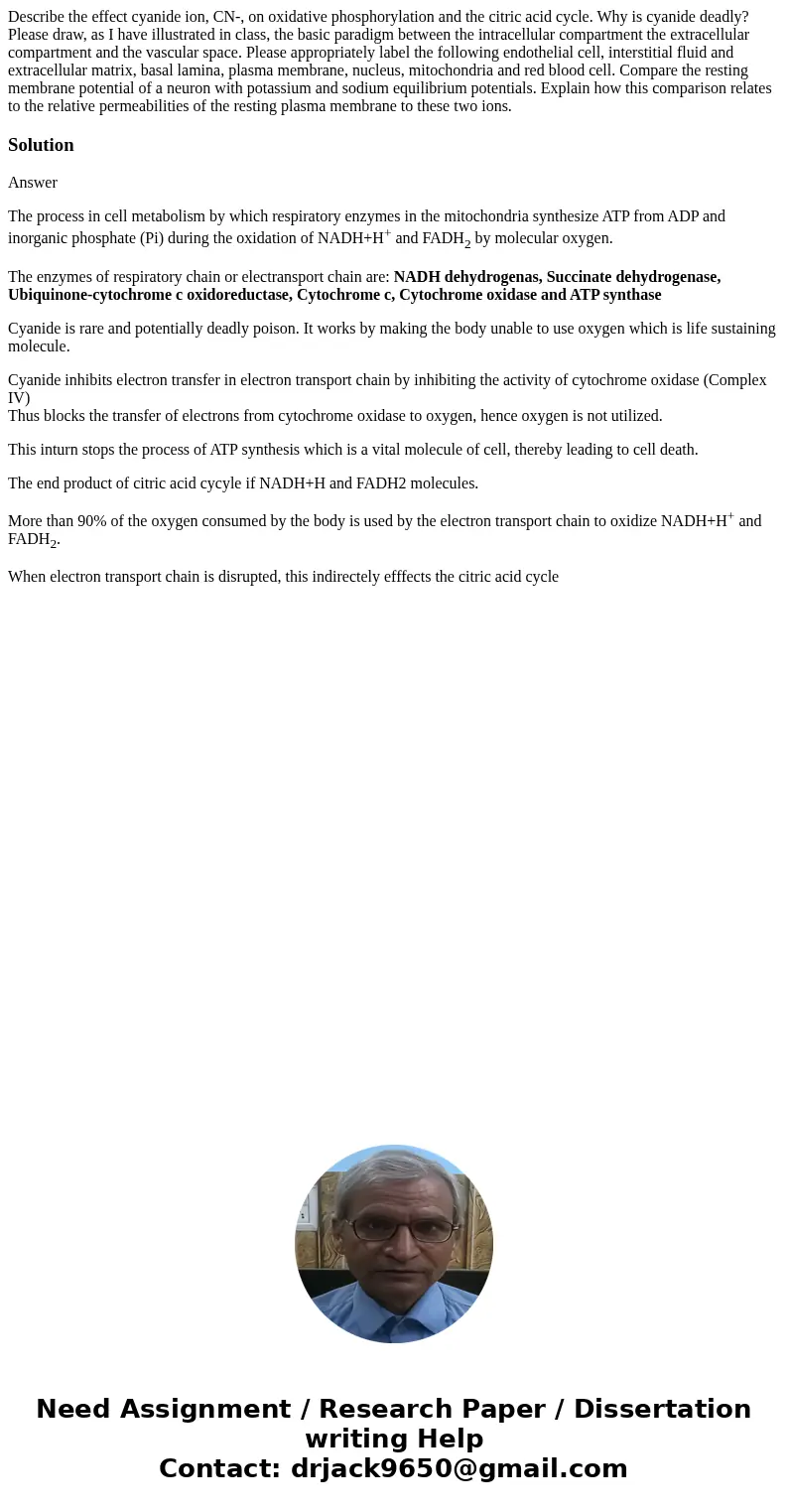Describe the effect cyanide ion CN on oxidative phosphorylat
Solution
Answer
The process in cell metabolism by which respiratory enzymes in the mitochondria synthesize ATP from ADP and inorganic phosphate (Pi) during the oxidation of NADH+H+ and FADH2 by molecular oxygen.
The enzymes of respiratory chain or electransport chain are: NADH dehydrogenas, Succinate dehydrogenase, Ubiquinone-cytochrome c oxidoreductase, Cytochrome c, Cytochrome oxidase and ATP synthase
Cyanide is rare and potentially deadly poison. It works by making the body unable to use oxygen which is life sustaining molecule.
Cyanide inhibits electron transfer in electron transport chain by inhibiting the activity of cytochrome oxidase (Complex IV)
Thus blocks the transfer of electrons from cytochrome oxidase to oxygen, hence oxygen is not utilized.
This inturn stops the process of ATP synthesis which is a vital molecule of cell, thereby leading to cell death.
The end product of citric acid cycyle if NADH+H and FADH2 molecules.
More than 90% of the oxygen consumed by the body is used by the electron transport chain to oxidize NADH+H+ and FADH2.
When electron transport chain is disrupted, this indirectely efffects the citric acid cycle

 Homework Sourse
Homework Sourse